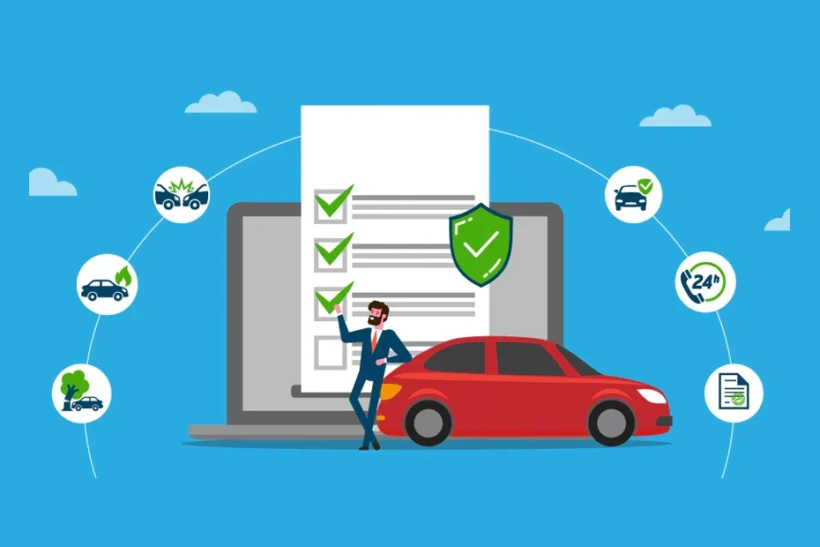If you’re new to buying your first policy in your own name rather than under your parent’s, you’ll be classified as a higher risk and pay more. Car insurance for young adults and teens can be complex, so use our guide before making any decisions.
Why is car insurance more expensive for young drivers? Here are some reasons:

- You are far more likely to have an accident than a driver over the age of 25, according to statistics.
- You don’t have a lengthy credit report. Insurance companies claim that individuals with bad or no credit histories tend to file more claims.
- You’re not a homeowner, you’re not married, and you don’t have a degree (yet). So, discounts such as these will not be available to you.
- You’ll no longer be able to take advantage of the multi-car discount. A discount of 10 to 25% may have offset the cost of insuring you and a vehicle on a parent’s policy.
- You might be turned down for insurance because of your age or medical conditions. Some insurers refuse to take on drivers under the age of 25.
At the same time, there are pros to having your own insurance policy:
You may have several years of expertise under your belt, which means the worst of the age penalty has passed.
If you have a clean driving record, your existing excellent record will be considered. This break is available to drivers with ten years or more of driving history and at least three years without an accident. This period must be free of collisions for a minimum of ten to 25 days.
On the other side, if you don’t have auto insurance and are moving from state to state, any new policy you buy will likely include a waiting period during which time you won’t be covered. You could save money by comparing rates before purchasing; some carriers offer various waiting periods for different policies depending on your driving history.
Determine How Much Auto Insurance You’ll Need

There are three different types of insurance available depending on your situation. The more you own, the more you’ll need. Your assets, if any, will also have an effect on how much coverage you require. Whether or not you have dependents and how severe your out-of-pocket expenses might be all impact your coverage needs. You can use our vehicle insurance coverage calculator to get a preliminary estimate of your coverage requirements.
- To drive lawfully, you must have state-required liability insurance.
- Extra liability insurance is required if you have money or property that may be the target of a lawsuit if you are at fault for an accident. You may be required to pay anything that your insurance does not cover.
- If you owe money on your car or can’t replace it due to a lack of cash, get comprehensive and collision.
Many states’ minimal liability insurance coverage isn’t enough to cover serious injuries or compensate for modern vehicles. It’s only enough to operate lawfully. If you have an old car or no savings or property to shield yourself from lawsuits, the minimum is your only option. If bare-bones coverage is what you can afford, it’s all you’ve got.
The Insurance Information Institute (III) and other insurance professionals recommend that drivers have bodily injury liability coverage of $100,000 per person and $300,000 per incident. $50,000 or more is suggested for property damage liability coverage.
Before You Buy a Vehicle, Compare Car Insurance Rates

The procedure is basically the same, regardless of the kind of insurance you’re purchasing. After you’ve decided what sort of insurance you want and how much coverage you need, you can begin comparing automobile insurance rates online, by phone, or through an insurance agent or broker.
Because the premium costs might differ dramatically, usually by thousands of dollars if you are very young, get quotes from a number of providers.
Compare competitors to find the best deal and value. A policy may be less expensive than another because it has fewer or different features and benefits. Make sure the firm you’ve chosen is a good one with outstanding customer service and claims-paying capacity. All insurance companies are evaluated by major rating organizations (such as Standard & Poor’s, Moody’s, and A.M. Best) in terms of their ability to pay claims on a regular basis. You can get your driving record ratings through public libraries or by requesting them from your auto insurance provider.
Learn What Kind of Insurance You’re Buying

An insurance policy is a legal contract with technical phrases that are difficult to comprehend. Read it ahead of time so you can learn about the coverage you’re purchasing. For instance, the policy will state:
- What’s protected and what isn’t
- Exclusions and limitations
- The coverage amount
- Lifespan of the coverage
- How much your insurance policy will cost you
- How to report a loss or submit a claim
An insurance agent will explain the many kinds of auto insurance and any terms, conditions, or benefits that you don’t understand. Even as you try to reduce your expenses, be sure you know what coverages you’ve given up. Look into car insurance for teens if you’re a young driver to get the best rates.
Look at Your Insurance Needs Throughout Life
As your life circumstances shift, so should your insurance coverage. Every year, check your insurance to see if you need more (or less) coverage or a different kind of coverage. Here are some times in your life when you should reconsider your insurance requirements:
- Marital Status
- Family
- Apartment rent
- You’re buying a home or car or other major purchase.
- College-bound child
- New job
- Buying or selling the family business
- Income fluctuation
- Aging parent
- Retirement
Make your insurance plans work for you by conducting regular evaluations of your needs and coverages.
As Time Goes on, Keep a Clean Record
Let’s use a practical example to illustrate the importance of keeping a clean record. Mike’s rates at three different age levels were compared by Insurance.com, starting at 18 years old with a paid-off car and liability insurance only, through college graduation, and a new car with full coverage, all the way to 30 years old. Given that Mike is a 26-year-old male, we’re going to assume he is still living at home and renting the entire time. He has a clean driving record and compares rates each year to find the best deal throughout this 13-year period, with the lowest rate coming from three different carriers.

